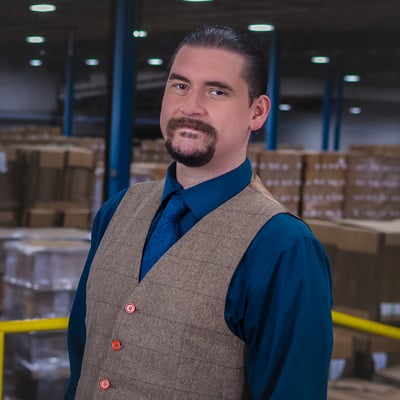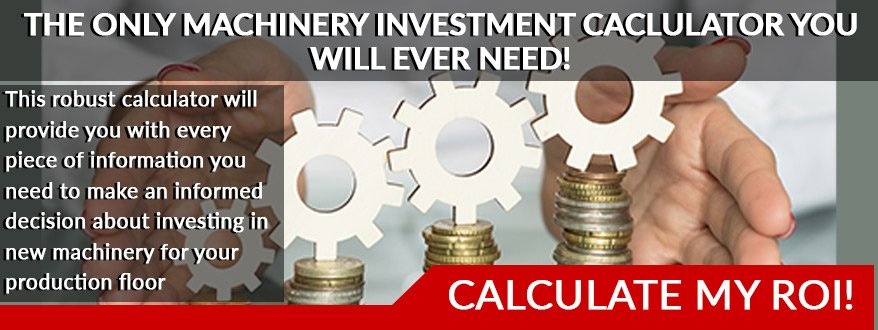Packaging Machinery: Understanding Lowest Cost VS Total Cost Of Ownership
When you buy packaging machinery, it can be tempting to try and buy the machinery with the lowest price tag. But, this kind of practice can often lead to spending more money. How is this possible? Four words.
Total cost of ownership.
The TCO (or total cost of ownership) is the full price you pay for a piece of machinery. This price includes all the associated costs. For example, things like materials, parts, and labor all affect the total cost you’ll pay. A more affordable machine that has unforeseen extra costs can be more expensive in the end.
Having helped many clients buy packaging machinery, Industrial packaging is uniquely situated to assist you in buying the right machine for your products and packaging line.
In this article, we will teach you how to calculate the total cost of ownership so that you can compare these costs directly - versus just the sticker pricing. This will prepare you to make the best buying decision that you can.
What Is The "Total Cost Of Ownership"?
Before we go any further, it would make sense to provide a working definition of the total cost of ownership. This will help you buy the right machinery and related items.
The total cost of ownership is the estimated full cost for a packaging machine. From a financial perspective, it is a tool for your accounting department. It shows the total cost of a product over its natural lifespan.
The total cost of ownership is a key piece of the puzzle of the purchasing process. Many buyers make the mistake of buying cheap machinery when trying to save money.
Compared to buying a machine with a higher TCO, the cheapest machine does not usually make sense. Lower-priced machinery may cost you more in the long run.
For example, suppose you were to buy a packaging machine from overseas. After the machine arrives, you set it up only to learn that it does not work. In this case, you will likely incur high costs remedying this issue.
Say there are no local technicians who work on that model of foreign-made equipment you buy. You may have to bring a technician from the other side of the world to work on it. The travel expenses alone may cancel out the cost savings you got from choosing a cheaper machine.
Why Cheap Does Not Always Mean Affordable Packaging Machinery
Buying the cheapest piece of machinery can often result in the loss of money in the long run. To really help drive this home, we will present to you, the story of Tom.
Imagine a purchasing manager for a large company named Tom. Tom recently found the cheapest possible option for a large packaging machine online. Tom paid $47,000 for a foreign-made machine that would have cost him $67,000 domestically.
The machine he bought includes no service or preventative maintenance plan. The machine is being shipped from China. Tom bought the machine online. He asked through live chat if he could also buy a spare parts kit in case he needs to do any repairs. The foreign vendor informs Tom that there are no kits currently available.
Need Help Calculating Your Machines ROI?
Tom chalks it up to a non-issue as he is happy about saving $20,000. And so, Tom went about his business. After the machine arrived three weeks late, Tom was in a bit of tizzy. But, he was still very comforted by his cost savings despite the unexpected downtime costing him $10,000. Now his savings sits at a cool ten grand. Such is life, eh?
Tom heads down to the warehouse. His team is scurrying about and arguing among themselves. He hopes that there will be no more issues. Unfortunately, that is not the case.
Tom greets the local packaging machinery technician. Tom had to hire him to set up the machine as installation services were not included with his new equipment. The technician tells Tom that the machinery stopped working shortly after it was set up. The machine is broken.
As it turns out, one of the operators implemented the wrong protocols to run the equipment. There was no training provided for the device so the operator tried to set it up the best they could and made a mistake. Due to the operator's human error, the machine is once again down, and production has stopped.
Tom asks the technician if he can fix it. The technician replies, well, yes, of course, I can fix it. But, you need to order replacement parts. There are no domestic vendors who can source the parts for this make and model.
Desperate, Tom orders the part from the company he bought the machine from. The order gets processed. But, they tell Tom the parts are back-ordered due to issues with the global supply chain.
Another two weeks pass before the parts arrive. Tom pays extra to get the technician back to his warehouse. He is the only one currently available to work on this machine.
The technician has to take the machine apart. He replaces the broken part and reassembles the machine. At this point, Tom opts to have the technician train his three operators.
A couple of days later, the machine is up and running, and life goes back to normal. But, there is a problem. Between the cost of hiring the technician for service and his cost of travel, Tom's new machine cost him $75,000.
At this point, Tom is probably wishing he that had purchased the more expensive machinery, rather than to deal with all of the problems that has come along with this purchase.
The moral of the story is, you do not want to find yourself in the same position as Tom. And, chances are, your boss is not enthused at that possibility either.
While this is a fictional story representing a "worst case scenario" we have run into many similar narratives in the real world. Which is a travesty that does not have to happen.
Let’s say Tom had forked over the extra $20,000 from the start for a more expensive machine. It’s likely that he would be running a top-quality machine with minimal issues. There would have been no downtime. And the proper protocols would have prevented issues when and if they did arise.
This, my friends, is why understanding the total cost of ownership is so important. When it comes to purchasing packaging machinery, it is a must.
When taking the first steps in this journey, you will want to calculate the total cost of ownership. Do this for each make and model of machinery that you are thinking of buying. Make sure not to focus exclusively on the machine's price during this process.
How To Calculate A Total Cost Of Ownership For Your Packaging Machinery
Now, in addition to your TCO, you have to calculate the ROI of your machinery. You will need to take stock of a few expenses. This will help you to find your total cost of ownership.
- Cost of the machinery.
- Cost of the materials.
- Cost of spare parts.
- Cost of installation.
- Cost of preventative maintenance.
- Cost of related utilities to run the equipment.
- Cost of shipping.
- Lead times for materials.
- Lead times for repairs.
- Lead times for preventive maintenance.
Once you have gathered the costs for each of these items, compare each brand's offering. Take note of the total cost of ownership.
You will find that the cheapest machines often carry a much greater total cost of ownership. So, in the long run, purchasing the cheapest machinery is a bad idea. This will usually end up costing you more money.
Now, calculating the total cost of ownership can be a long-term project. Suppose you are not enthused at the prospect of doing this yourself.
In that case, you will want to consider speaking to a local packaging expert. Talk to at least three different vendors and have them do all the leg work for you. Once you have received the calculated TCO from each vendor, choose the one that best suits your needs.
About Nathan Dube
As the Digital Marketing Specialist at Industrial Packaging, I am honored to create content for such a phenomenal company and work with one of the greatest teams in the Packaging Industry. Whether creating a video, writing blog posts or generating other pieces of content and multimedia, I am always excited to help educate and inspire our prospects and clients to reach their highest potential in regards to their packaging processes and needs.




